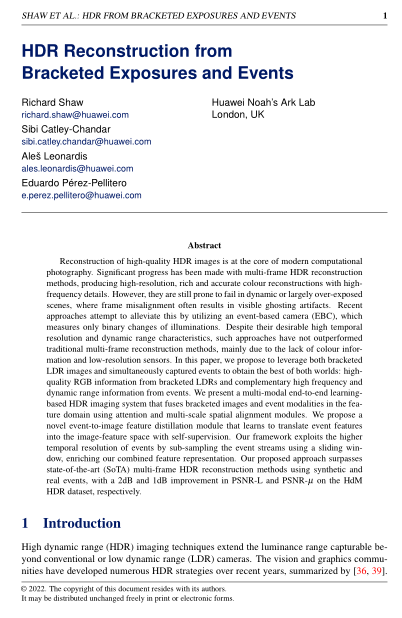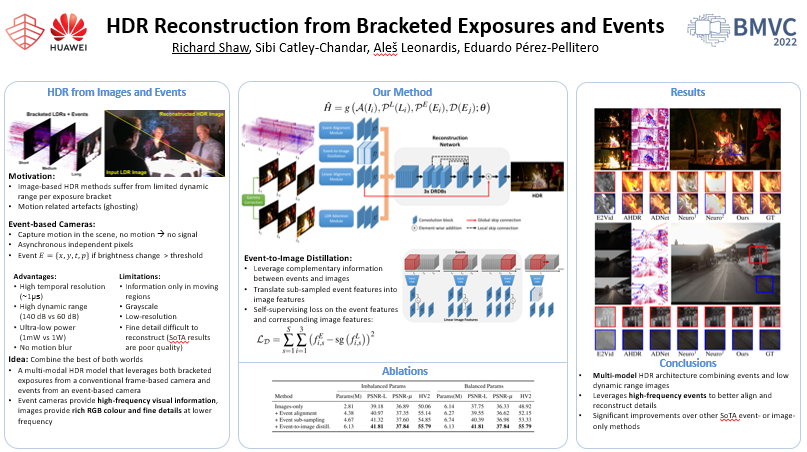HDR Reconstruction from Bracketed Exposures and Events
BMVC 2022
Richard Shaw Sibi Catley-Chandar Aleš Leonardis Eduardo Pérez-Pellitero
Huawei Noah’s Ark Lab
TLDR
Multimodal camera system that uses neuromorphic (event-based) sensor together with bracketed RGB images to obtain state-of-the-art quality, surpassing methods using single sensors or bi-sensors without frame bracketing.

Abstract
Reconstruction of high-quality HDR images is at the core of modern computational photography. Significant progress has been made with multi-frame HDR reconstruction methods, producing high-resolution, rich and accurate colour reconstructions with high-frequency details. However, they are still prone to fail in dynamic or largely over-exposed scenes, where frame misalignment often results in visible ghosting artifacts. Recent approaches attempt to alleviate this by utilizing an event-based camera (EBC), which measures only binary changes of illuminations. Despite their desirable high temporal resolution and dynamic range characteristics, such approaches have not outperformed traditional multi-frame reconstruction methods, mainly due to the lack of colour information and low-resolution sensors. In this paper, we propose to leverage both bracketed LDR images and simultaneously captured events to obtain the best of both worlds: high-quality RGB information from bracketed LDRs and complementary high frequency and dynamic range information from events. We present a multi-modal end-to-end learning-based HDR imaging system that fuses bracketed images and event modalities in the feature domain using attention and multi-scale spatial alignment modules. We propose a novel event-to-image feature distillation module that learns to translate event features into the image-feature space with self-supervision. Our framework exploits the higher temporal resolution of events by sub-sampling the event streams using a sliding window, enriching our combined feature representation. Our proposed approach surpasses state-of-the-art (SoTA) multi-frame HDR reconstruction methods using synthetic and real events, with a 2dB and 1dB improvement in PSNR-L and PSNR-$\mu$ on the HdM HDR dataset, respectively.
BibTeX Citation
@article{shaw2022eventhdr,
title={HDR Reconstruction from Bracketed Exposures and Events},
author={Richard Shaw, Sibi Catley-Chandar, Ales Leonardis and Eduardo P\'erez-Pellitero},
journal={BMVC 2022},
year={2022},
}

